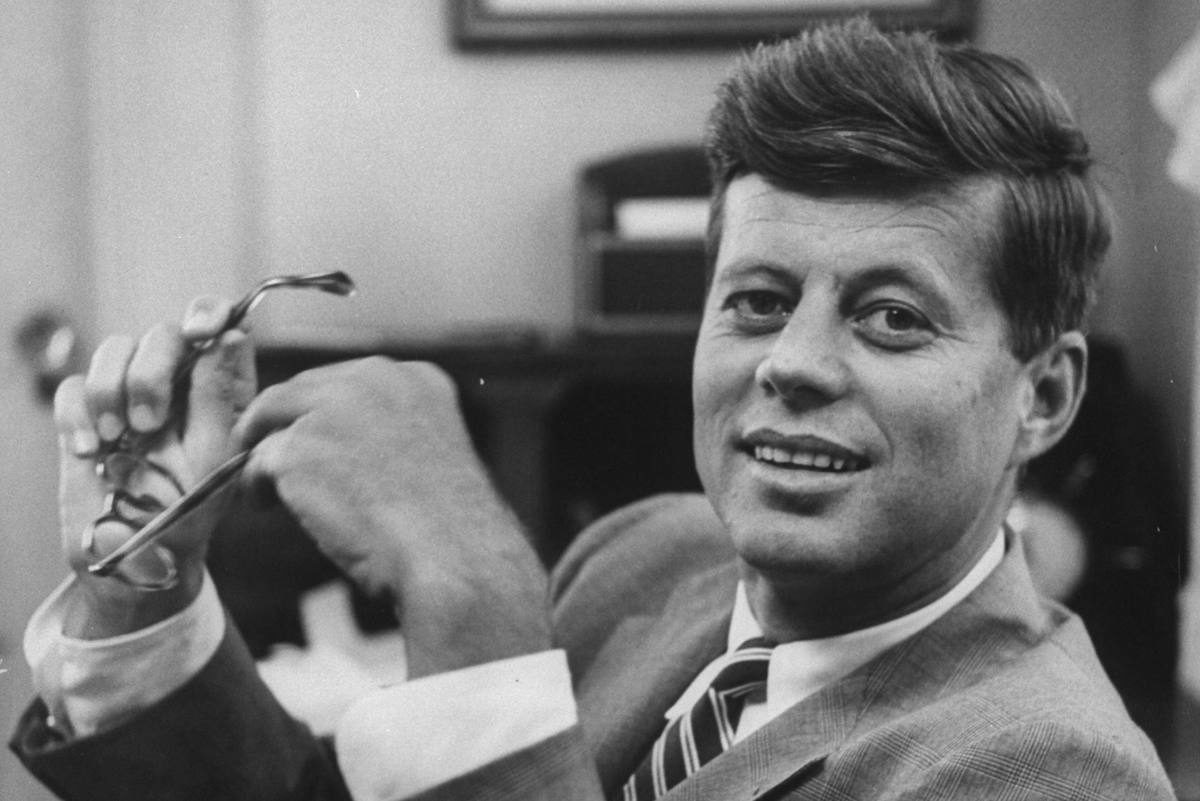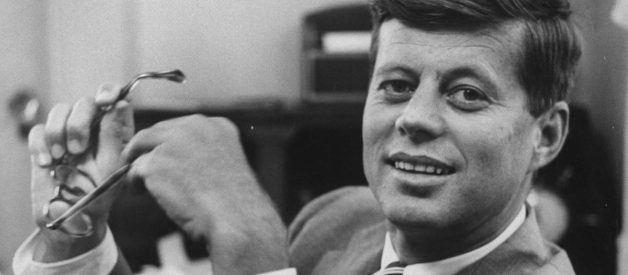
It is very important that when a new president is inaugurated, that he gives a superb inaugural address. This is the moment that he can try to earn the trust of the entire half nation that did not vote for him. President John F. Kennedy must have known this because his inaugural address is spectacular. In his address he defines the type of nation that he believes America should be. He uses parallelism and repetition to make sure his speech resonated with his audience, and he uses pathos to win over the emotions of the citizens of the United States.
Right off the bat, Kennedy starts using parallelism. He tells his audience that instead of thinking of his inauguration as a victory, they should think of it as a symbol of freedom, ?..symbolizing an end as well as a beginning ? signifying renewal as well as change.? Sometimes, people don?t like change, but by juxtaposing change with renewal, it doesn?t sound so bad, in fact, it makes the change seem enticing. ?Let every nation know, whether it wishes us well or ill, that we shall pay any price, bear any burden, meet any hardship, support any friend, oppose any foe to assure the survival and the success of liberty.? This sentence is powerful. Rather than just saying that America will ?do anything,? he actually lists all the things that America is willing to do. Parallelism like this is not uncommon in speeches and articles, but by using it over and over Kennedy is able to use it persuasively. To me, the most influential sentences of the speech are in the last paragraphs. Kennedy uses more parallelism stating ??ask not what your country can do for you; ask what you can do for your country,? and then, ?My fellow citizens of the world, ask not what America will do for you, but what together we can do for the freedom of man.? Analysis? are not typically supposed to be full of quotations, but Kennedy words everything so well, that if I were to paraphrase, the sentences would lose some meaning. Because, it is not just what Kennedy stated in his address that made it so convincing, it was how he stated everything.
A very popular rhetorical strategy used in speeches and presentations is repetition. Kennedy doesn?t repeat ideas and concepts as much as he repeats specific words. In the first half of his speech, every single paragraph starts with the phrase, ?to?, or ?to those.? He addresses almost everything that there is to address. Old allies, new states, people in misery, republics south of our the border, the United Nations, and our adversaries. By starting all his paragraphs with the same words, the audience is more likely to pay attention to what he is saying. Kennedy?s speech becomes familiar, and people typically like things that are familiar to them. In the second half of his speech he switches to ?let both sides.? ?Both sides? is referring to our nation, and any nations seeking to oppose us. Kennedy wants to remind the United States that there is still good in all nations. That everything we are trying to achieve, the other nation is as well. By continuously referring to both sides, Kennedy helps the audience see the pattern, and pretty soon, they are able to start drawing conclusions about the other side themselve, and see that they really aren?t that different from us. Even though he mostly repeats words, he also repeats some ideas, which is known as restatement. He repeats the ideas of freedom and peace throughout his address, which is valuable, because when he is done, the audience will remember that he cares a lot about freedom and peace. By using repetition and restatement, Kennedy captures the audience?s attention, and gives his address a powerful flare.
Finally, Kennedy uses pathos to earn the nation?s trust and help them to understand that he shares their same values. John F. Kennedy was a naturally charismatic being, and he liked talking to people. This helped him greatly with his speech because he understood what the nation wanted, and by talking about those things, Kennedy was able to employ pathos into his speech. As mentioned before, Kennedy addresses many different groups during his repetition of ?to those.? One of the groups he talks about is the poor and needy. The majority of America is not rich, and especially not rich at this time. Kennedy appeals to their emotions when he says that as a free nation we can help ?break the bonds of mass misery? for those who are living in it. He also says ?If a free society cannot help the many who are poor, it cannot save the few who are rich.? There are a lot of good people in America, and this statement appeals to everyone, both the poor and the rich. With some speeches, it is easy to appeal to an audience, because that audience will often all share similar values and beliefs, but when the audience is an entire country, values and beliefs range from all over the board. Kennedy had to find things that he could talk about that would appeal to the majority of the nations emotions. One of the topics he chose was that of developing peace among other nations. Pretty much everybody likes the idea of peace, yet it always seems so intangible. Kennedy makes peace seem possible, which is a huge turn-on for his audience. By speaking about topics that Kennedy knew America would relate too, he utilized the rhetorical strategy known as pathos, and was better able to earn the trust of the nation.
John F. Kennedy was a admirable president. He established the peace corps, got the United States out of recession, and even helped avoid nuclear war. However, his great reign as President of the United States of America all started with his inauguration address. In this address he utilizes three main rhetorical strategies: parallelism, repetition, and pathos. By using these three strategies, Kennedy was able to construct a persuasive essay that convinces the majority of America to respect him as the new president.


